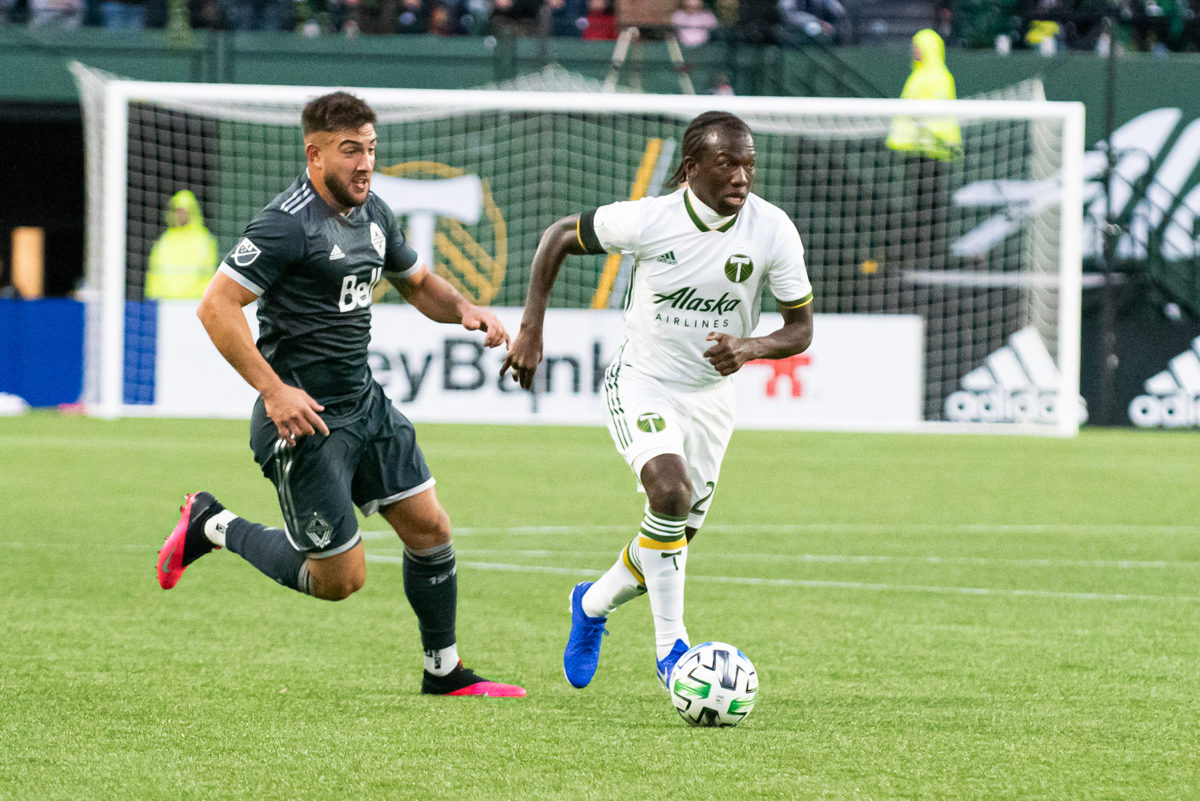After six matches—some of which we saw and some of which we did not—we are starting to get an idea as to who the 2020 Portland Timbers are and who they could be.
On the road against Costa Rican sides Deportivo Saprissa, Municipal Grecia, and C.S. Herediano the Timbers went 3-0 with a combined score of 8-2. Despite four months of hungering for soccer from Timbers fans, little information and even less video from these matches is available to the public. The opposition lineups from those three games against a freshly convened Timbers side remain unknown, but both Saprissa and Herediano are known quantities in CONCACAF: Saprissa took the Montreal Impact to penalties in their Champions’ League matchup earlier this week before falling to the Canadians and Herediano are the 2019 Liga FPD Apertura Champions.
At home against MLS opposition, however, it was a different story. Timbers fans were able to see their side in person at Providence Park during the preseason for the first time in three years, but what they did see was clearly not the finished product.
After the Timbers beat the Vancouver Whitecaps on a penalty kick and a hotly debated ball that was either a lucky cross or an absurd shot (depending on how much faith you have in the killer instinct of Andy Polo), things quickly went downhill. In the midweek match against Minnesota United FC, the Timbers reserves found themselves outmatched as they tried to play through a stout Loons defense and were repeatedly victimized on the counter. The following Saturday, the Timbers went up on the New England Revolution before the Eastern Conference side were able to storm back into the match with yet more counter-attacking play that put the Timbers on the back foot for much of the match and result in their second loss of the preseason.
The back to back defeats at the hands of Minnesota and New England, sides looking to catch their opponents off-balance and exploit any opening in their defensive schemes, clearly revealed several areas of weakness for the Timbers as they look to transition to a more proactive defensive scheme.

But before exploring those weaknesses, let us take a look at just what it is that the Timbers were doing in the attack during the preseason.
With an attacking corps or Diego Valeri, Sebastian Blanco, Yimmi Chara, and Felipe Mora supported by Diego Chara and Cristhian Paredes out of the midfield as well as Jorge Villafaña and Jorge Moreira at full-back, the Timbers have a group that is comprised of versatile, experienced players, all of whom are capable of swapping their positions on the field as they search for an opening in the opposing defense.
Throughout the preseason it was a common sight to see two Timbers carrying the ball down the flank and looking to overload the opposition fullback. What is special about this is the number of different combinations of players with which the Timbers try to create these overloads. On Saturday’s final match of the preseason, New England fullback Dejuan Jones was forced to deal with Chara and Y. Chara, Y. Chara and Moreira, Valeri and Y. Chara, Mora and Blanco, and more as the Timbers fluidly moved their attackers around the pitch.
This freedom of movement has several effects on the Timbers’ game plan. First, it does have the potential to move around defenders and create openings that a judiciously placed pass or cross could exploit. Second, it allows the Timbers to identify and exploit potential mismatches on the fly without having to reorganize their attack as they are in a constant state of reorganization.
Unfortunately for the team, for all of the advantages of this attacking system, there are disadvantages as well and those are what we saw on display during the preseason. With the players on each wing regularly changing and the fullbacks regularly committing themselves forward into the attack, the Timbers leave significant amounts of space open on their own flanks for their opponents to attack into.

Exacerbating this issue even further is Giovanni Savarese’s pursuit of a high defensive press. While turning over their opposition in the attacking end is an excellent way to accumulate good scoring chances, it also further commits the wingers up the pitch and, much of the time, adds to the unguarded spaces out wide on the flanks.
We saw these spaces exploited in each of the Timbers’ preseason games. The lone goal by the Whitecaps came when Valeri was on the right and was slow to recover defensively. Two of the Loons’ first three goals came when an opposition fullback was able to get in behind their winger and attack the back post. And the first of the Revolution’s three goals came when a run from Teal Bunbury pulled Moreira inside and left Gustavo Bou all alone at the back post while Yimmi Chara, who should have been sliding in to cover, watched from the top of the box.
Those were just the goals that the Timbers conceded. No matter how one watched the Timbers in the preseason, it was plain to see that teams were ready for them and had a plan to exploit these spaces.
There is only one quick fix for these issues: abandon the Timbers’ current system, reign in the attacking support from the fullbacks and midfield, and revert to the bunker-and-counter style of play that the Timbers have used to great but often uninspiring effect in recent seasons.
Which is not to say that the Timbers should cut and run. Savarese’s current approach to the game is demanding both physically and mentally, so it will take some time for the side to really understand who needs to do what where when why how.
Making the right recovery runs, properly marking your man, and knowing when you need to fill in space is something that can only come with time. The Timbers have the skill to implement just such a system. It remains to be seen if they can put together the willpower.

